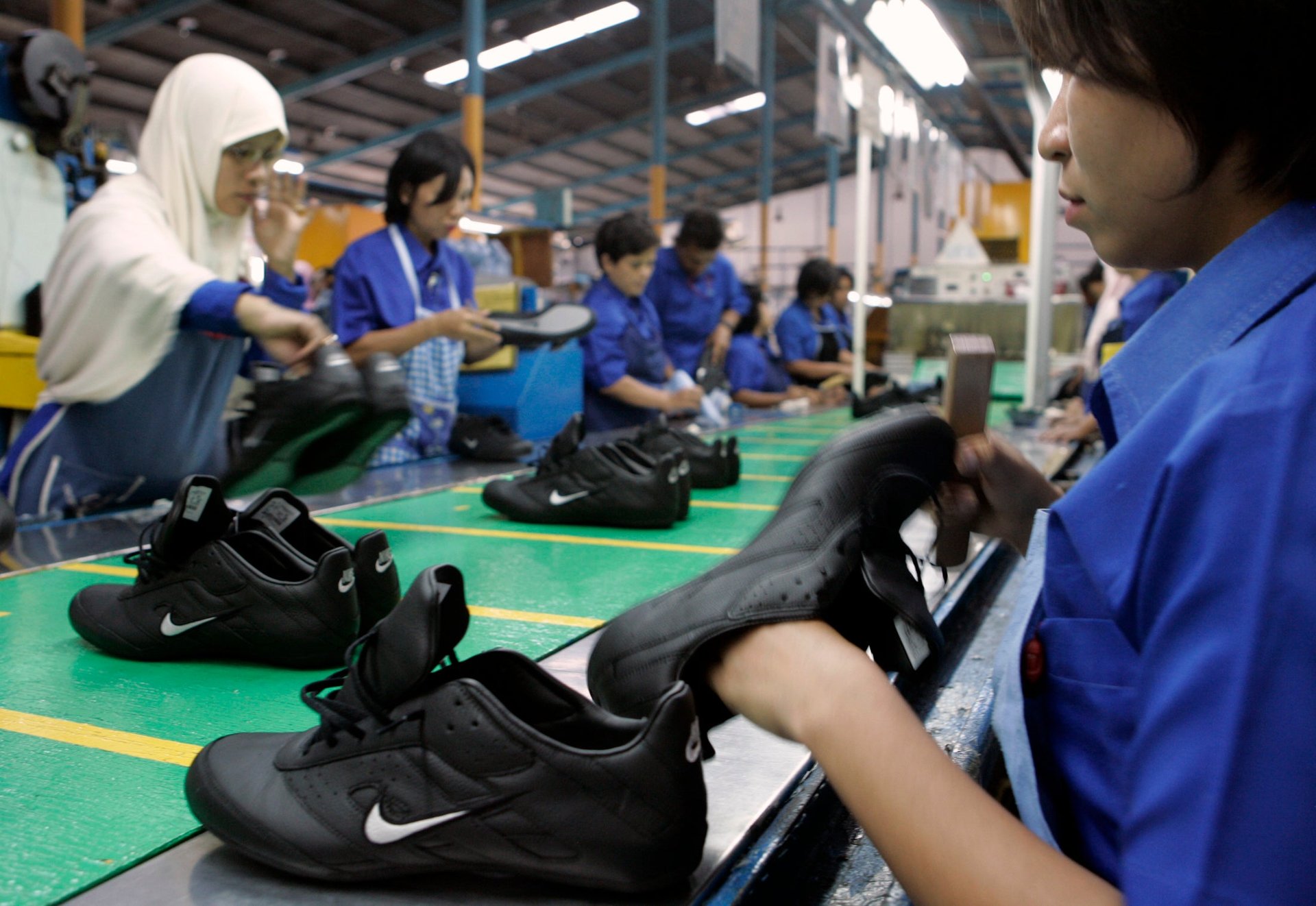Sneakers’ global footprint
Where your sneakers are made says a lot about the world.


Where your sneakers are made says a lot about the world.
Just look at the share of Adidas and Nike shoes made in China. It used to be the top manufacturer of each company’s footwear, but as the country’s economy has developed, wages have risen, and China has started looking to make higher-value products than shoes. The changes have prompted the brands to shift their manufacturing to other countries, notably Vietnam and Indonesia.
Here is how Adidas’s top three manufacturing destinations have changed over roughly the last decade:
And here is the change in Nike’s top manufacturing countries:
There’s still a lot of production done in China, of course. That’s because it isn’t simple to just pick up and move out of the country. Athletic shoes may not be as tough to produce as microchips, but they’re still more complex than very basic products such as t-shirts. For example, some sneaker parts, such as the cushy midsoles in performance athletic shoes, often require specialized machines and know-how to produce. As an industry, it demands a lot of capital and planning to make the best sourcing decisions. China still has a manufacturing infrastructure for certain products that other countries can’t yet match.
China, in fact, still makes far more of the total footwear, including sneakers and other varieties of shoes, imported into the US than any other country. Numbers can vary depending on the source, but the World Bank estimates that China produced nearly 60% of the shoes imported into the US in 2017. That’s why trade groups and US footwear brands have spoken out against Trump’s new tariffs on Chinese imports, which are set to raise the prices of Chinese-made shoes for US consumers.
Sneaker brands are also experimenting with new technologies, such as 3D printing, and there’s another important trend happening in sneaker manufacturing: nearshoring, where brands make their products near their biggest markets. Nike was working with the high-tech manufacturing company Flex to produce shoes for the US in neighboring Mexico (paywall), though the companies have since ended their partnership. Adidas built what it calls Speedfactories, which use high-tech automation, in Germany and the US. These moves reflect the need for brands to get faster at delivering their goods to customers who are moving at the speed of Instagram, and it shows how technological advances in automation are allowing companies to offset the higher labor costs of producing in these locales.
But only a small amount of production is actually taking place in these factories. They’re more intended to make limited production runs of sneakers for local markets. Adidas CEO Kasper Rorsted has said he thinks it’s an “illusion” to believe that sneaker manufacturing could move back to places such as Europe in any large volume. Production will remain in Asia for some time.
There is a positive side to China’s rapid development for the big sneaker brands. While brands may not be making as many sneakers there, they’re selling a lot more in China. Its mushrooming middle class has more disposable income and leisure time to spare, meaning more people playing sports and getting into fitness. And they all need sneakers.